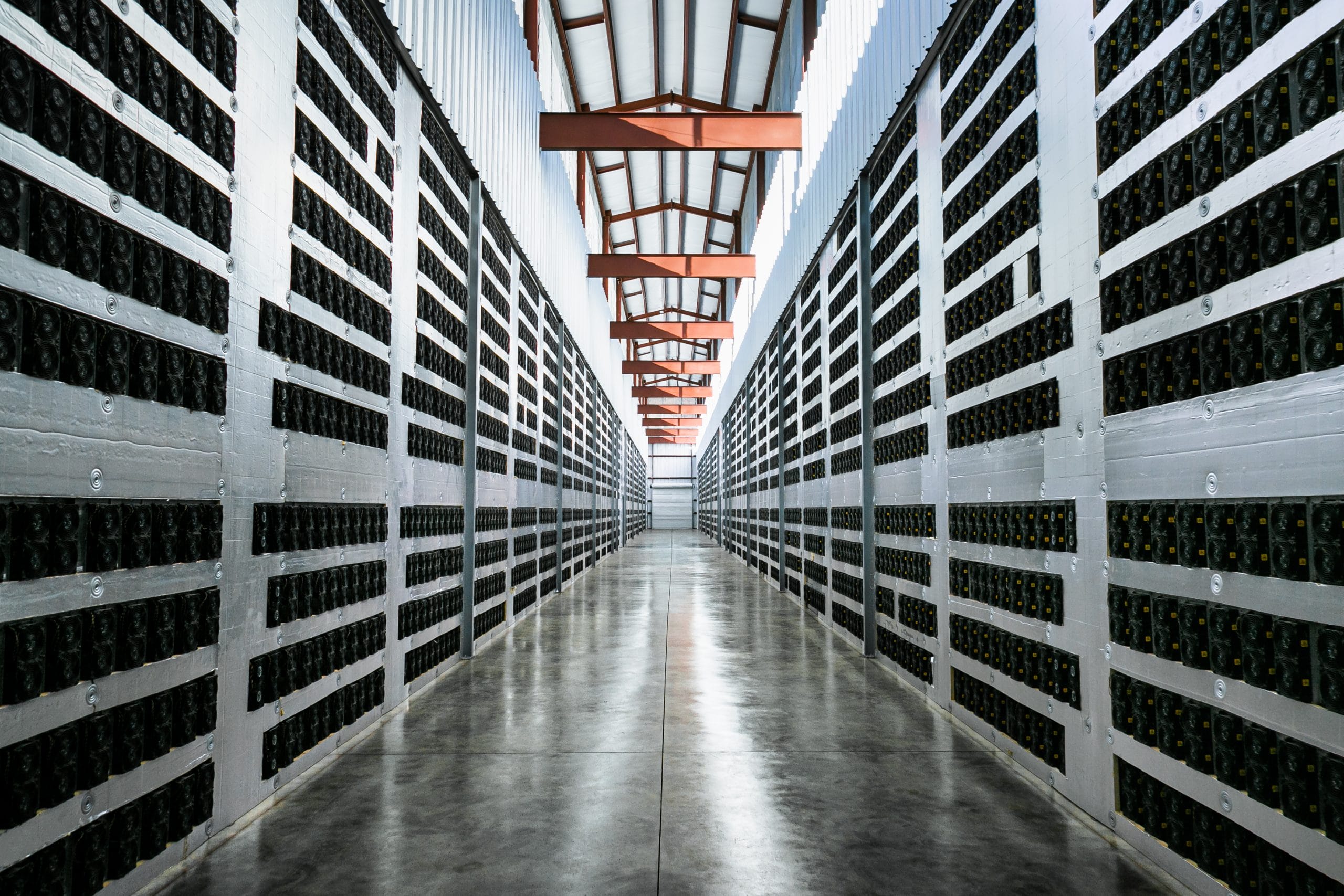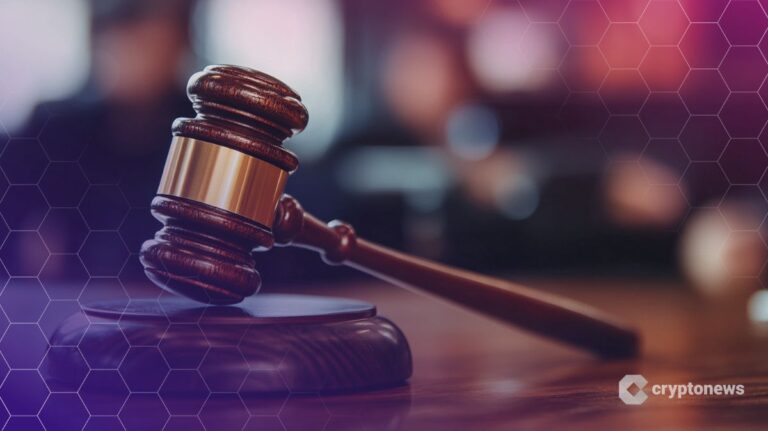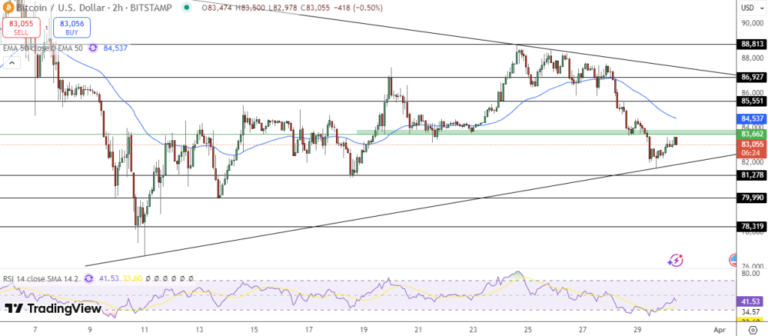
Some of the largest Bitcoin (BTC) miners in the world are using their infrastructure to host high-performance computing (HPC) data centers.
HPC computing data centers use energy to process large datasets and complex computations that are needed to train artificial intelligence (AI) models.
Core Scientific Inc. – one of the most established large-scale Bitcoin (BTC) miners in the United States – announced last month a 12-year partnership with CoreWeave to deliver approximately 70 megawatts (MW) to host CoreWeave’s NVIDIA GPUs for HPC operations.
Other large-scale Bitcoin miners are taking similar steps. On June 14, Hut 8 Mining Corp signed an agreement with Canadian health authority Interior Health to provide colocation services from its Kelowna data center until 2028.
The Sydney-based Bitcoin miner Iris Energy (IREN) will also build 510 MW of data centers this year.
Why Bitcoin Miners Are Hosting HPC Data Centers
Jamie McAvity, Energy Expert and CEO at Cormint Data Systems — a Bitcoin mining company based in Ft. Stockton, Texas – told Cryptonews that publicly traded North American Bitcoin miners generally have some infrastructure required to host HPC data centers.
“These miners have high voltage interconnection and the ability to fully power an electrical transmission system,” McAvity said. “Even though Bitcoin mining centers and HPC data centers are very different, there are some similarities to take note of.”
McAvity also remarked that recently, there has been a major shortage of the infrastructure needed for HPC data centers to conduct operations. This has particularly become the case in the U.S., where there is increasing demand for data centers that can train AI models.
McAvity pointed out that established Bitcoin miners who set up operations in the U.S. during 2018 and 2019 may already have the needed infrastructure for HPC data centers.
“The best example of this is the deal that Core Scientific executed with Core Weave,” McAvity said. “Core Weave used to be an Ethereum miner in 2020, when Ethereum mining was primarily done using GPUs. When Ethereum switched from proof-of-work to proof-of-stake, Core Weave needed to figure out what to do with those GPUs.”
McAvity pointed out that Core Weave transitioned into the AI sector since the company was already equipped to do so.
HPC Data Centers Help Bitcoin Miners Profit, But Not Without a Cost
Core Weave is now valued at $19 billion and is helping Core Scientific – a Bitcoin miner that was once in bankruptcy – profit greatly.
“The reason why Bitcoin miners can profit so much from hosting HPC data centers is because the contracts are long-term and they service the most valuable companies in the world,” McAvity said.
Additionally, McAvity noted that contracts to lease HPC data centers pay a high rate of kilowatt hour.
“This can be anywhere from 50 cents to as high as a dollar per kilowatt hour,” he said. “If you compare this with Bitcoin mining revenue, it’s much more. Bitcoin mining is 5-10 cents per kilowatt hour, so HPC data center hosting can generate 10 times more revenue than Bitcoin mining.”
While impressive, not all Bitcoin miners can host HPC data centers. This model has a number of challenges and costs.
Russell Cann, Chief Development Officer at Core Scientific, breaks this down. Cann told Cryptonews that Bitcoin mining is volatile, whereas HPC has high flat margins that don’t fluctuate. In essence, it seems like Bitcoin mining and HPC data centers go hand-in-hand.
However, Cann noted that the big difference between the two is capital requirements.
“If I’m building a quality Bitcoin mine with current machines, I am probably spending about $1 million per MW,” he said. “But if I’m building an HPC data center and filling it with H100 GPUs, I’ve got a $10 million MW infrastructure cost and a $25 million per MW GPU cost; the B200 GPUs will cost you nearly $50 million per MW. There is about a $35-$60 million per MW cost for an HPC data center versus a $1 million per MW cost for a Bitcoin mining facility.”

HPC Data Centers Have Specific Requirements that Differ from Mining
Cann also pointed out that it was a natural transition for Core Scientific to partner with Core Weave due to a long-standing relationship.
“Core Weave became a client in 2019 when we started hosting their GPUs for Ethereum mining,” he said.
Checklist to replicate what $CORZ is doing in #AI/HPC:
✅ +1 GW of built-out power infrastructure
✅ The right type of power contracts in place
✅ A team of digital infrastructure experts who have a deep understanding of enterprise data centers
✅ Infrastructure built… pic.twitter.com/sRi9cpOBzS— Core Scientific (@Core_Scientific) July 15, 2024
Additionally, Cann shared that Core Scientific became involved in the AI sector in 2019, noting that the company used traditional data centers early to establish Bitcoin mining operations.
“We were stripping down traditional data center designs to make them Bitcoin mining sites. And even though Bitcoin mining and AI data centers are very different, we have converted our large-scale sites to accommodate HPC/AI hosting because all of the bones are there. But this isn’t true for all miners and sites,” he said.
According to Cann, Bitcoin miners with a large power footprint that can move from a flexible load to a firm load may be able to host HPC data centers. Yet he noted that moving from a flexible load – which Bitcoin miners already have – to a firm load – where power cannot be curtailed – is a big leap.
“Flexible load means that Bitcoin miners can curtail operations when power is needed based on grid demands,” he said. “But this becomes a big jump when we are talking about a 100-200 MW HPC data center site. Also, AI data centers need to have a tremendous network fabric that most Bitcoin miners don’t have. You need access to fiber backbones with lots of throughput from multiple providers with very low latency.”
Will HPC Data Centers Become a New “Trend” for Bitcoin Miners?
Cann remarked that while some Bitcoin mining sites meet these requirements, he believes many miners will not convert operations to support HPC data centers due to infrastructure requirements and needed resources.
While this may be true, Cann shared that Core Scientific has secured over 1200 MW of contracted power.
“We have 1200 MW of contracted power, 500 MW for Bitcoin mining and we have set 700 MW aside for HPC, which produces 500 MW at the rack,” Cann explained. “We also have a pipeline of new sites we are currently evaluating for growth to support both Bitcoin and HPC operations.”
McAvity further noted that it makes sense for Bitcoin miners to move in a similar direction to Core Scientific if they can afford the costs.
“It’s not like a miner just shows up at the door of Microsoft or Amazon to tell them they would like to build out their data centers without any previous experience,” McAvity said. “Core Scientific had a relationship with Core Weave already, making them well positioned to do AI.”
Yet McAvity believes that the increasing demand for AI data centers may lead to more Bitcoin miners considering entering the sector.
“Mining companies are making these changes, but winning the business of the largest AI companies remains a trivial undertaking,” he said. “But if you can do it, and do it well, then you will make a lot of money.”




















